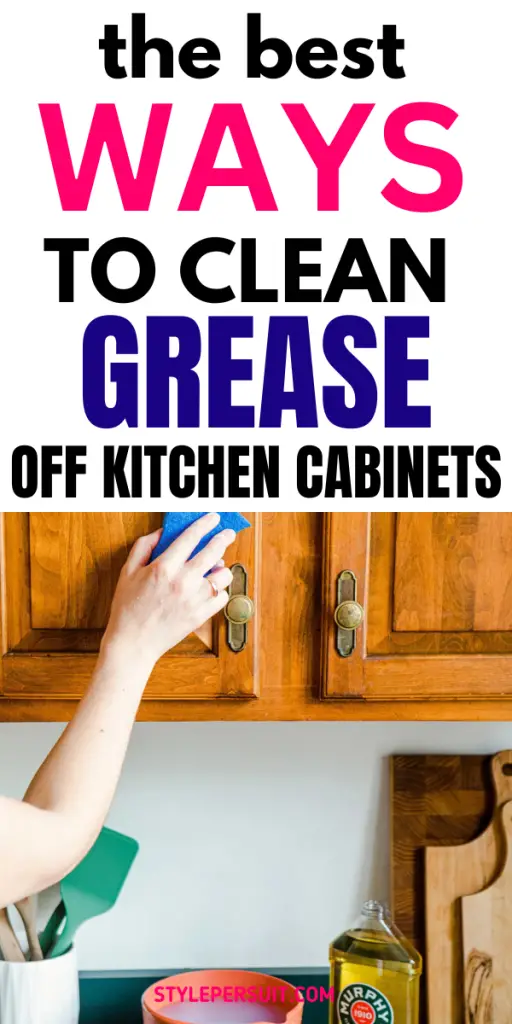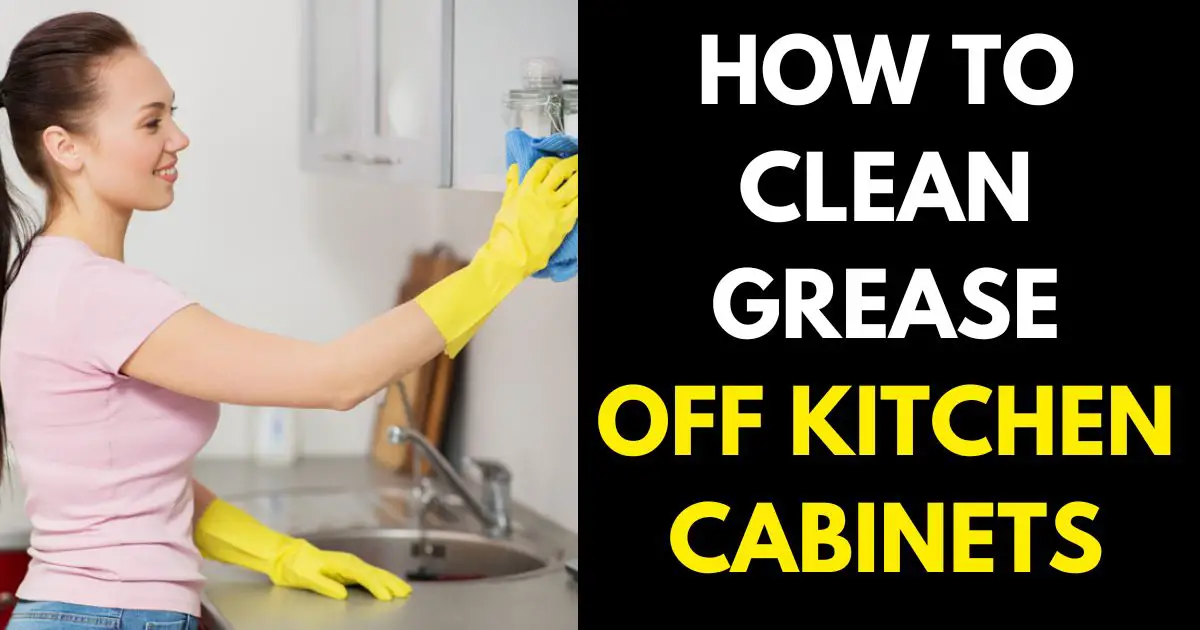Dealing with sticky grease on kitchen cabinets can be a hassle, especially in a busy household where cooking happens frequently. This grease buildup usually comes from cooking or touching the cabinets with greasy hands. Thankfully, you can tackle this issue without harsh chemicals. Natural cleaning ingredients like white vinegar, baking soda, and lemon can do the trick. If you’re unsure where to start, don’t fret.
We’ve gathered four easy methods to help you clean your kitchen cabinets effectively.
When to Clean Your Kitchen Cabinets
We’ve got a simple plan for keeping your kitchen cabinets spick and span. It involves two steps: weekly touch-ups and seasonal deep cleans. Here’s how it works:
Weekly: Instead of constantly wiping down your cabinets, take a few minutes each week for a quick touch-up. Grab a microfiber cloth and spray some multipurpose cleaner on it. Wipe away any fingerprints, splatters, or marks you see. Don’t forget to clean the hardware for extra shine.
Seasonally: Every few months, give your cabinets a thorough cleaning. First, empty them out completely. Then, use a mild cleanser on a microfiber cloth to wipe down the shelves, inside and outside of the doors. Get into all the nooks and crannies with a clean toothbrush. Let everything dry completely before putting your stuff back in.
Best Ways to Clean Grease Off Kitchen Cabinets
Method 1: Dish Soap and Water
For most kitchen cabinets, a simple mix of warm water and a bit of dish soap does wonders to cut through grease.
1. Mix a few drops of dish soap with warm water until it’s soapy.
2. Dip a sponge in the solution (not soaking wet) and gently scrub away the grease and grime.
3. Rinse with clean water to get rid of any soap residue.
4. Dry the surface thoroughly with a dry microfiber cloth.
Method 2: Citrus-Based Multipurpose Cleaner
Citrus oil is a natural degreaser that can tackle tough grime on your cabinets. Look for a multipurpose cleaner with citrus oil or make your own.
1. Spray the citrus-based cleaner on your cabinets and let it sit for a few minutes.
2. Use a damp sponge or microfiber cloth to wipe away the grease.
3. Finish by wiping off any leftover cleaner with a clean, damp cloth.
4. Dry the cabinets completely.
To make your own citrus cleaner, fill a jar with citrus peels and white vinegar. Let it sit for two to three weeks, then strain out the peels and pour the liquid into a spray bottle. Use it the same way as store-bought cleaner.
Method 3: Baking Soda and Water
When you’re dealing with stubborn grease, baking soda can be your go-to cleaner. Its slight abrasiveness helps scrub away grease while its alkaline nature helps dissolve it.
1. Make a paste by mixing equal parts baking soda and water.
2. Apply the paste to grease stains using a clean microfiber cloth, rubbing in small circles.
3. As the cloth gets dirty, switch to a new one and keep scrubbing until the grease is gone.
4. Once you’ve covered all the cabinets with the paste, use a damp cloth to wipe off the excess.
5. Finally, dry the cabinets thoroughly with a dry cloth to remove any leftover moisture.
Make sure not to leave any moisture behind, as it could damage the cabinet finish over time.
How to Clean Kitchen Cabinets That Are Stained
Kitchen cabinets can get dirty from daily use. Here’s how to tackle the most common stains:
1. Fingerprints: Use a mixture of equal parts water and vinegar. Dampen a cloth with this solution, wipe off the fingerprints, and then polish with a dry cloth.
2. Grease: For greasy spots, especially above the stove, use diluted vinegar. You might need to repeat this a few times to completely remove the grease.
3. Food Splatters: Quickly wipe up spills with a damp cloth. For stubborn stains, make a paste with baking soda and water. Apply, let sit for a few minutes, then wipe off and polish with a clean cloth.
4. Water Stains: If you have hard water, use distilled water when cleaning to avoid water spots.
5. Scuffs: Use a soft eraser to gently rub away scuffs. Wipe off any residue with a clean cloth. This works great for white cabinets.
How to Clean Kitchen Cabinets That Are Stained
Your kitchen cabinets see a lot of action, so stains are inevitable. Here’s how to tackle the most common ones:
1. Fingerprints: Mix equal parts water and vinegar. Dampen a cloth with this solution and wipe away fingerprints. Polish with a clean cloth for a shiny finish.
2. Grease: Diluted vinegar works wonders on grease stains. Apply the solution with a cloth, repeating as needed until the grease is gone.
3. Food splatters: Act fast with a damp cloth to remove food messes. For stubborn stains, make a paste of baking soda and water, apply, let sit, then wipe away and polish.
4. Water stains: To prevent water spots, use distilled water instead of tap water for cleaning.
5. Scuffs: Gently rub a soft eraser over scuff marks, then wipe clean with a cloth. This is great for white cabinets.
With these simple steps, your kitchen cabinets will look fresh and clean again in no time.
How to Clean Painted Kitchen Cabinets
Painted cabinets are a popular choice for kitchens, adding color and style. But to keep them looking fresh, they need regular cleaning. Here’s how:
1. Spot Clean with Baking Soda: Mix one part water with two parts baking soda to make a paste. Apply it to stains, let it sit for a few minutes, then wipe clean with a cloth. Buff with a dry cloth to remove any residue.
2. Remove Grease with Ammonia: Dilute ammonia with water and use a damp cloth to gently wipe away grease stains from the cabinets.
If the paint starts chipping after a few years, it might be time for a fresh coat.
Cleaning Wood Cabinets
Wood cabinets come in various finishes, so it’s essential to use gentle cleaners. Here’s how to clean them:
1. Use Oil Soap: Murphy Oil Soap is a great option for cleaning and shining wood cabinets without causing damage.
2. Use Damp Cloths: Avoid soaking the cabinets; damp cloths are enough. Too much water can harm the wood.
3. Buff with a Dry Cloth: After cleaning, use a dry microfiber cloth to polish the wood, wiping with the grain.
4. Monitor High-Moisture Areas: Cabinets above the stove are prone to moisture. Give them extra care and consider adding more sealant for protection.
How to Clean Laminate Cabinets
Laminate cabinets are easy to clean and don’t need much upkeep. Here’s what to do:
1. Wipe with All-Purpose Cleaner or Vinegar: Use a cleaning wipe or diluted vinegar to wipe down the cabinets. Dry with a cloth afterward.
2. Remove Stains with Baking Soda Paste: Make a paste with baking soda and water, apply to stains, let sit, then wipe off.
3. Avoid Abrasives: Don’t use harsh scrubbing pads that could scratch the laminate.
4. Remove Scuffs with Soft Eraser: For marks on lower cabinets, use a soft eraser to gently rub them off.
How to Clean Glass Cabinets
Glass cabinets often have a mix of materials like wood or laminate. Here’s how to clean them:
1. Clean Glass with Glass Cleaner: Use glass cleaner and a polishing cloth to wipe away fingerprints and marks.
2. Clean Inside Too: Open the cabinet and clean the inside of the glass as well.
Avoid using oil-based cleaners near the glass; they can leave streaks that are hard to remove.
FAQs
How Can I Make My Cabinets Shine?
– For laminate cabinets: Use a bit of citrus-based oil and a soft cloth.
– For wood cabinets: Mix equal parts water and vinegar, spray, and wipe with a soft cloth.
– For painted cabinets: Rub a bit of vegetable oil to make them shine.
Do I Need to Deep Clean Cabinets Seasonally?
You can deep clean as often as you like, but be careful with wood cabinets and don’t use too much water or cleaning products. Painted cabinets can scratch if scrubbed too hard. Also, avoid getting hardware and hinges wet as they can discolor.



